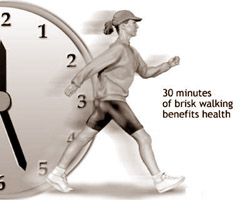
Plastic surgery does wonders
by Shanika Sriyananda
 Plastic surgery...! What comes to your mind when you hear these two
words slipped from somebody. A Bollywood or Hollywood star perhaps, who
had regained a beautiful face or a slim body, after removal of extra
flesh jutting out all over! Plastic surgery...! What comes to your mind when you hear these two
words slipped from somebody. A Bollywood or Hollywood star perhaps, who
had regained a beautiful face or a slim body, after removal of extra
flesh jutting out all over!
Or... a person who had not bothered to get rid of her aging -wrinkles
and shifting flesh, woman who is happy after getting rid of bulging
tummy with sagging breasts and other places.
It is true that plastic surgery will help to keep one's beauty intact
or to go through the natural phenomena - aging. But... what about a boy
who was born with a deformity on his face ... a small girl who was
bitten by a dog or a young man who has a deformity due to a road
accident...?
For all these people plastic surgery would be a great relief to face
future challenges and most importantly 'plastic surgery' would brighten
their lives who were stigmatized due to their physical appearances, who
may even encounter harassments in our so-called civilized society.
In Sri Lanka, plastic surgery is getting popular and people from all
four corners of the country seek treatment at the 'Plastic Surgery and
Reconstruction Unit at the Colombo National Hospital (CNH).
At this combined clinic, with the assistance of an orthodontist,
speech therapist and plastic surgeons, hundreds of people undergo
plastic surgery for cosmetic purpose like enlarged breasts, large
tummies, scars, revisions of prominent ears and problems with noses.
"From minor surgeries to most expensive plastic surgeries like
reconstructive procedures are done here", says, Consultant Plastic
Surgeon Dr. Duleep Perera.
According to Dr. Perera, the reconstructive procedure which is called
a micro vascular transfer is performed for loss of soft tissues or for
an exposed bone on the leg or the hand.
"Here, we transfer a body part from one area of the body to where the
soft tissue cover is needed. For an exposed bone, joint bone or exposed
nerves we have to harvest tissue part from the thigh, leg or chest
within the vascular and the nerve supply" he says.
The entire procedure, will take six to eight hours and according to
Dr. Perera, it is a costly operation in the private sector.
Nearly three reconstructive procedures will be performed monthly and
the major causes for this surgery are the road accidents. "Commonly it
is the exposed bone. This surgery is essential for a person to survive
after an trauma or scars in a joint. Otherwise the joint may become
useless", he points out.
Dr. Perera says that male breast enlargement is a major problem in
Sri Lanka and needs plastic surgery to correct it.
According to Dr. Perera, children with congenital problems refer to
the Unit and the major causes for undergoing plastic surgeries are due
to trauma, domestic violence and road accidents.
[email protected]
***
What is plastic surgery?
Plastic surgery is not a surgery that perform to make the correction
using plastic stuff. No synthetic substance is involved in the surgical
procedure and the word 'plastic' is taken from the Greek word 'plastikos',
which means to form or mold.
Plastic surgery is a special type of surgery that can involve both a
person's appearance and ability to function. Plastic surgeons strive to
improve patients' appearance and self-image through both reconstructive
and cosmetic procedures.
* Reconstructive procedures correct defects on the face or body.
These include physical birth defects like cleft lips and palates and ear
deformities, traumatic injuries like those from dog bites or burns, or
the aftermath of disease treatments like rebuilding a woman's breast
after surgery for breast cancer.
* Cosmetic (also called *aesthetic*) procedures alter a part of the
body that the person is not satisfied with. Common cosmetic procedures
include making the breasts larger (augmentation mammoplasty) or smaller
(reduction mammoplasty), reshaping the nose (rhinoplasty), and removing
pockets of fat from specific spots on the body (liposuction).
------
Why should you exercise?
 Why should you exercise? Studies have shown that regular exercise
significantly increases life expectancy and improves overall health. Why should you exercise? Studies have shown that regular exercise
significantly increases life expectancy and improves overall health.
Regular physical activity reduces the risk of cancer, heart disease,
and osteoporosis. It can reduce or improve symptoms of menopause, PMS,
diabetes, as well as numerous other conditions.
An improved self-image and increased energy level are frequent added
benefits of exercise. Regular exercise is also helpful in the prevention
of one of the most common reasons for doctors office visits-lower back
pain. Special exercises for those with back pain are many times
beneficial in reducing and/or eliminating lower back pain.
However, safe and injury-free workouts require certain precautions be
taken before beginning a new exercise program including seeing your
physician first, and for women fifty and over having an exercise stress
test to check for any underlying heart problems.
Taking it slow and easy... Walking offers the easiest, least
expensive way to workout for most people.
Research shows that people who go from a sedentary lifestyle to one
which includes moderate amounts of physical activity derive the most
health benefits from exercise.
It's important to start out slowly if you have been inactive for a
long period of time. The speed and length of your walk should match your
level of fitness. It may be necessary for you to start with just 10 or
15 minutes and increase your walking as you feel able.
A good way to measure weather you are working too hard is if you are
unable to carry on a conversation-if you can't talk-slow down your walk!
A healthy, injury-free walk is one in which you can easily continue
talking while you walk.
Stretching for injury-free workouts...: According to a 1991 report,
almost half of women are walking for exercise on a regular basis, but
only 26 percent of women are doing stretching exercises.
Back and neck stretch: Stretching the back, neck and abdominal
muscles before exercise can prevent sprained backs and necks.
Foot stretching: Foot pain can be prevented by gently stretching the
Achilles tendon. Pull your foot backward and hold for 10 seconds, repeat
10 times. Properly fitted and appropriate footware is also important in
preventing foot injury.
Stretching muscles: Gently stretch all major muscles prior to a
workout to prevent muscle strains and pulls. Strengthen the muscles on
the front of your thighs by contracting and relaxing the muscle with
your knee straight. Contract to the count of ten and relax- repeat 10
times on each leg.
Shin stretching: Shin injury can be prevented with a slow warm-up
before and stretching following each workout. Proper arch support is
also important as is a soft workout surface-grass, instead of asphalt.
Shoulder stretch: After-workout shoulder pain is prevented by
standing straight and rolling the shoulders backward in a circular
motion, also stand and hold the back of a chair while bending at the
waist so that your back is parallel to the floor-make 25 circles with
your free arm and repeat on other side.
Elbow stretch: Forearm strength can be built up by doing reverse
curls with light weights or squeezing a rubber ball.
Eating your way to injury prevention...: Proper nutrition for those
who participate in endurance sports such as running, jogging, and
bicycling includes consuming large amounts of carbohydrates before an
event or workout session. Studies have shown that a depleted store of
muscle glycogen results in fatigue, which results in injury.
A diet rich in carbohydrates (60 to 70 percent of daily calorie
intake), increases the amount of glycogen stored in the muscles, however
the carbohydrates must be consumed shortly before a workout in order to
be beneficial. It is also a good idea to consume carbohydrates soon
after a heavy workout.
What if I already have osteoporosis or another bone disorder? Even
people with bone and joint conditions can safely participate in a
balanced program of moderate physical activity. Swimming is probably the
best overall activity for those who are afflicted by diseases of the
bones and joints-no stress is put on the joints and the water offers
exceptional, non-stressful resistance.
But I don't have time to exercise... Your daily one hour can be
broken up into segments of time-perhaps, one hour of brisk walking in
the morning and one hour of gardening or another physical activity in
the evening. Keeping a daily activity record might help you to remember
your daily workout.
Remember, any amount of exercise is better than none at all and once
you establish an exercise routine, you will probably find yourself
exercising beyond the minimum one hour, three to five times a week
required for good health.
Your Guide to Women's Health |
